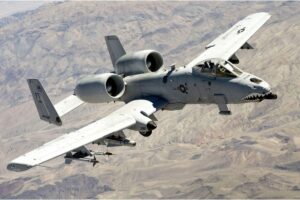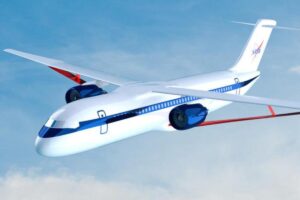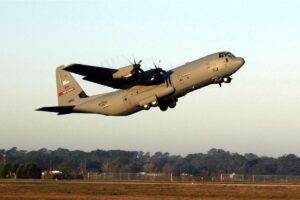SERIAL to 1553 Protocol Converters: Bridging Technologies
In the interconnected world of modern avionics, defense systems, and industrial automation, ensuring seamless communication between diverse components is a formidable challenge. A critical scenario arises when integrating systems that use simple serial communication (e.g., RS-232, RS-422, RS-485) with highly structured, robust communication protocols like MIL-STD-1553. SERIAL to 1553 protocol converters play a pivotal role in bridging this gap. These devices translate asynchronous serial data streams into structured, deterministic 1553 messages, ensuring interoperability and data integrity across platforms. This white paper explores the principles, design, application, and benefits of SERIAL to 1553 protocol converters, offering insight into their growing importance in modern systems.
1. Communication Standards Overview
1.1 Serial Communication Protocols
Serial communication protocols such as RS-232, RS-422, and RS-485 are widely used due to their simplicity, low cost, and ease of implementation. These protocols enable point-to-point or multi-drop data transmission using asynchronous methods, which lack a centralized control mechanism but offer sufficient flexibility for many legacy and embedded systems.
1.2 MIL-STD-1553 Protocol
MIL-STD-1553 is a military standard designed for robust and deterministic communication in critical systems. It uses a time-division multiplexed command/response structure governed by a Bus Controller (BC), Remote Terminals (RTs), and a Monitor. Its redundant bus architecture and fault-tolerant design make it ideal for mission-critical avionics applications.
1.3 The Need for Protocol Conversion
Serial and 1553 protocols differ fundamentally in data format, control mechanisms, and timing. Bridging them requires more than physical signal conversion. It entails comprehensive translation of data structures, synchronization, error handling, and compliance with 1553’s deterministic nature.
2. Purpose and Function of SERIAL to 1553 Converters
2.1 Bridging Asynchronous and Synchronous Worlds
Serial communications operate asynchronously, meaning they lack a common clock between devices. MIL-STD-1553, on the other hand, uses synchronous communication tightly regulated by a master controller. A SERIAL to 1553 converter must buffer incoming serial data, synchronize it with the 1553 bus timing, and ensure orderly message transmission.
2.2 Facilitating Legacy System Integration
Many defense and aerospace systems still rely on serial-based sensors and instruments. Upgrading the main data bus to 1553 without replacing all legacy devices is cost-effective, and converters enable this compatibility, extending equipment lifespan.
2.3 Advantages of Using Converters
- Interoperability: Enable communication between disparate systems.
- Cost Efficiency: Avoids redesigning or replacing serial devices.
- System Longevity: Extends the operational life of existing assets.
- Streamlined Integration: Simplifies hybrid architectures with both modern and legacy components.
3. Architecture of SERIAL to 1553 Converters
3.1 Physical Interface Modules
The converter typically includes serial input transceivers (RS-232/422/485 compliant) and MIL-STD-1553 transceivers with transformer coupling. These modules must support differential signaling and robust EMI protection.
3.2 Data Buffering and Timing Alignment
FIFO (First In, First Out) buffers temporarily store incoming serial data, which is then time-stamped and scheduled for 1553 message formatting. Precision timing modules ensure that message delivery aligns with 1553 bus cycles.
3.3 Protocol Translation Engine
An embedded microcontroller, FPGA, or ASIC runs custom firmware that parses serial data, encapsulates it into 1553-compliant messages, adds command/status headers, and performs parity checking and data validation.
3.4 Control Logic and Message Scheduling
The converter manages state machines that ensure adherence to 1553’s command/response logic. It must detect and respond to Bus Controller commands, simulate Remote Terminal behavior, and manage message prioritization.
3.5 Power Supply and Ruggedization
Converters used in harsh environments require wide input voltage ranges, efficient regulation, and protection against transients. Rugged enclosures provide shielding against mechanical shocks and electromagnetic interference.
4. Use Case Scenarios
4.1 Avionics Retrofits
Older aircraft systems often use serial interfaces for telemetry, diagnostics, or environmental controls. Upgrading flight management systems to 1553 while maintaining legacy subsystems demands reliable converters.
4.2 Ground Combat Vehicles
Military vehicles may contain legacy serial equipment for navigation, targeting, or communications. As these platforms adopt more advanced 1553-based command networks, converters enable backward compatibility.
4.3 Unmanned Systems (UAVs, UGVs)
Unmanned platforms often integrate lightweight, low-power serial sensors. Using converters, these platforms can connect such sensors to a centralized 1553 bus for enhanced command and control integration.
4.4 Industrial Automation and Testing
Industrial facilities using RS-422/485 controllers benefit from MIL-STD-1553 for high-reliability data links. Converters also facilitate testing environments where serial-emitting devices simulate real-world conditions.
4.5 Spacecraft and Satellite Systems
Space applications use serial protocols for subsystem control due to simplicity and power efficiency. When interfacing with central 1553 buses, converters ensure reliable communication without compromising mission goals.
5. Challenges in Serial to 1553 Conversion
5.1 Timing Discrepancies
Synchronizing asynchronous data with a deterministic bus requires precise timing mechanisms. Latency and jitter must be minimized to maintain data integrity.
5.2 Message Formatting
Serial data streams often lack structured headers. The converter must intelligently segment and package this data into MIL-STD-1553 message frames with correct command/status structure.
5.3 Error Handling and Validation
Serial communication may not include error checking. The converter must implement error detection (parity, checksums) and correction mechanisms to meet 1553 standards.
5.4 Bus Arbitration
MIL-STD-1553 imposes strict timing and control protocols. The converter must not disrupt the bus schedule, requiring careful integration and validation.
5.5 Data Throughput Management
Serial devices may operate at varying speeds. Converters must buffer and throttle data to prevent overflow or underflow when interfacing with fixed-rate 1553 messaging.
6. Compliance and Standards
6.1 MIL-STD-1553B Compliance
Converters must meet all electrical, mechanical, and functional specifications of the MIL-STD-1553B standard. This includes signal integrity, timing, redundancy, and fault tolerance.
6.2 DO-160 and DO-254 Standards
Avionics converters must conform to DO-160 (environmental conditions) and DO-254 (design assurance for airborne electronic hardware). This ensures airworthiness and regulatory compliance.
6.3 Software Assurance (DO-178C)
Firmware used in protocol converters must meet DO-178C standards for software development in aviation systems, ensuring reliability and traceability.
6.4 STANAG and NATO Interoperability
For military applications, adherence to NATO STANAG standards ensures converters support multinational operations and joint system compatibility.
7. Advanced Features in Modern Converters
7.1 Configurable Roles
Modern converters can be configured as Remote Terminals, Bus Monitors, or Test Terminals, depending on system needs.
7.2 Diagnostics and Built-In Test (BIT)
BIT features help detect and isolate faults. These include power-on self-tests, signal quality monitoring, and loopback testing.
7.3 Remote Configuration and Updates
Some converters offer Ethernet or serial access for firmware updates, parameter adjustments, and real-time diagnostics, improving maintainability.
7.4 Data Logging and Playback
Integrated memory allows logging of data transactions for post-mission analysis or system debugging.
7.5 Redundant Channel Support
Support for MIL-STD-1553’s dual-redundant bus structure enhances fault tolerance and mission reliability.
8. Implementation and Integration Best Practices
8.1 Requirements Definition
Thoroughly define system requirements including data rates, format, latency, environmental conditions, and compliance needs before selecting a converter.
8.2 Electrical Isolation and EMI Protection
Converters should incorporate galvanic isolation and proper shielding to protect against noise and ensure signal integrity.
8.3 Testing in Operational Conditions
Simulate real-world scenarios to validate converter performance, timing, and message accuracy under stress conditions.
8.4 Vendor Support and Documentation
Choose vendors that offer robust support, detailed documentation, and long-term lifecycle guarantees for mission-critical systems.
8.5 Modular and Scalable Design
Modular converter designs enable system scalability and easier maintenance, especially when integrating multiple legacy devices.
9. Future Trends and Innovations
9.1 Software-Defined Converters
The future lies in software-defined protocol conversion where a single platform can be reprogrammed to handle different protocols dynamically.
9.2 AI and Predictive Diagnostics
Machine learning can help predict failures, optimize data routing, and improve conversion efficiency through pattern recognition.
9.3 Miniaturization and SWaP Optimization
Smaller, lighter, and more power-efficient converters are critical for UAVs, CubeSats, and wearable military systems.
9.4 Cybersecurity Integration
Encryption, secure boot, and authenticated updates are becoming standard features as cybersecurity risks increase.
9.5 Multi-Protocol Gateway Development
Next-generation converters may support multiple simultaneous protocols (e.g., SERIAL, 1553, ARINC 429, Ethernet) in a unified platform.
Conclusion
SERIAL to 1553 protocol converters serve as vital bridges between past and present technologies. They preserve legacy systems while enabling integration into modern, deterministic data networks like MIL-STD-1553. As aerospace, defense, and industrial systems continue evolving, these converters will play an increasingly central role in ensuring reliability, compatibility, and cost-effective modernization. Emphasizing robust design, compliance, and forward-looking features will help engineers leverage these devices for maximum operational benefit.





